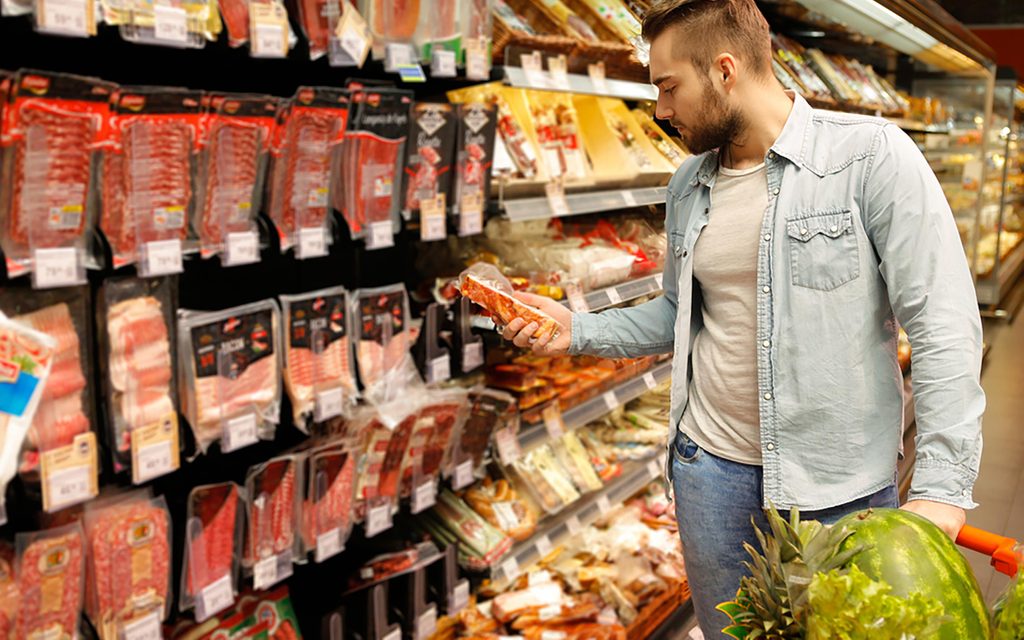
Start by choosing quality meat, chicken, and fish
Look for sustainably raised, pasture-raised, grass-fed beef, and free-range chicken. Buy wild fish or organic farm-raised fish if you can; salmon is particularly healthy, as it’s rich in omega-3 fatty acids. Avoid swordfish and tuna, which have higher concentrations of mercury.
Animals are healthiest when raised in their natural environment, and healthy meat comes from healthy animals. Eating sustainably raised animals also means that you’ll avoid the negative effects of excess hormones and antibiotics often fed to factory-raised animals. Here are other healthy protein options.
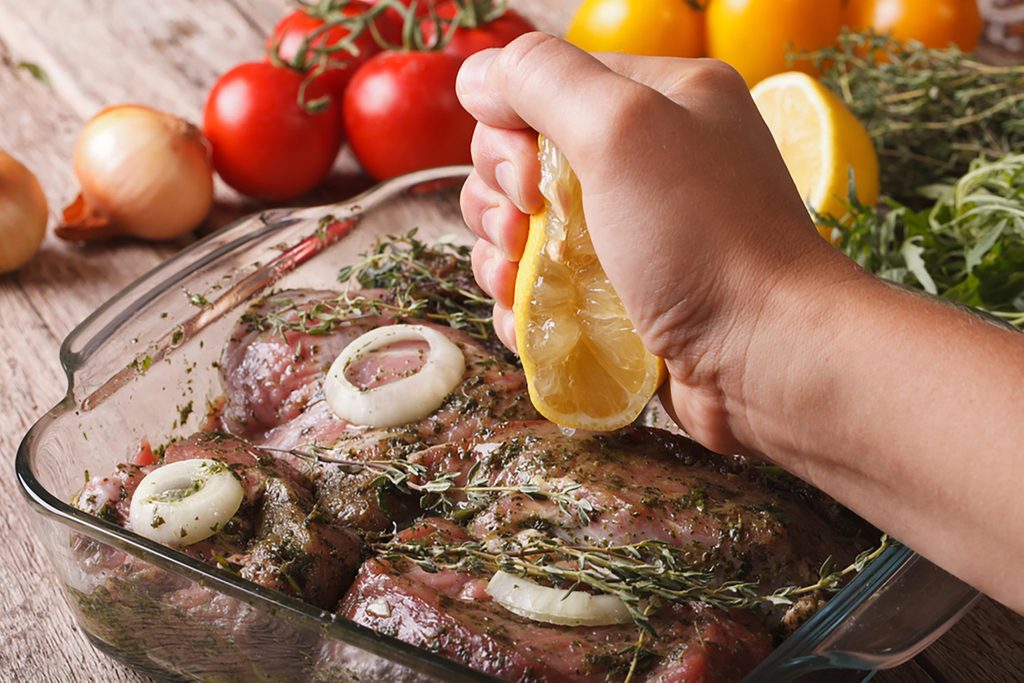
Marinate before you grill
Marinades not only make grilled foods taste better, they may also make them safer. A chemist at the Lawrence Livermore National Laboratory in California found that marinating chicken in simple mixture of olive oil, cider vinegar, garlic, mustard, lemon juice, salt, and brown sugar reduced carcinogenic compounds in the finished product by more than 90 percent. Researchers don’t know why; they suspect that marinating draws out chemical precursors of carcinogens. Make sure to check out this foolproof guide to grilling.
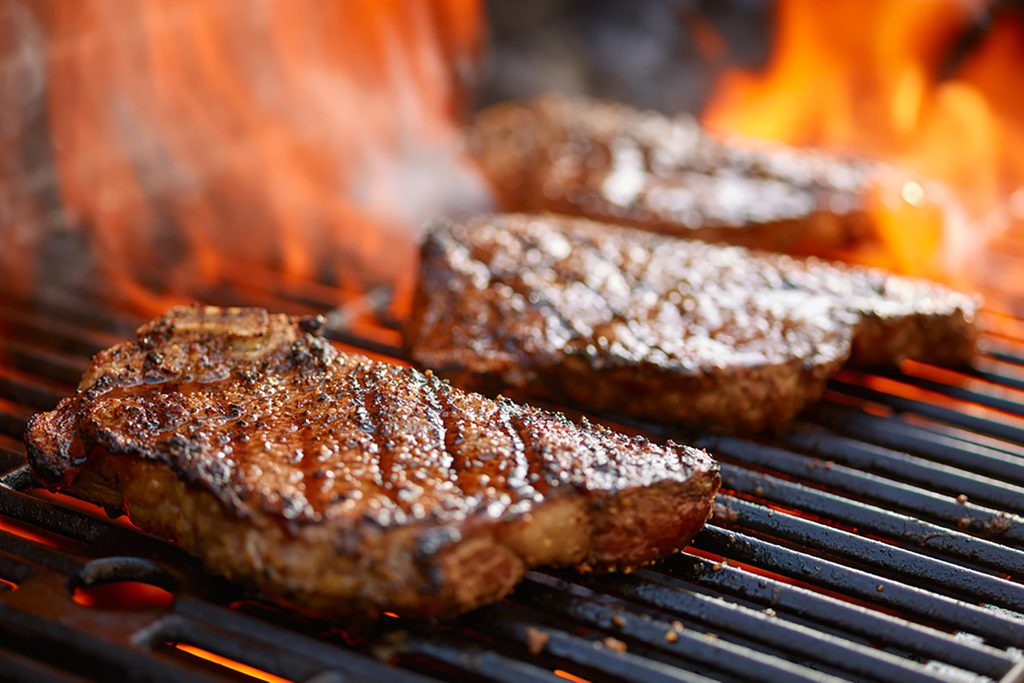
Where there’s smoke, there’s cancer risk
Grilling meat, poultry, or fish, whether over wood, charcoal, or gas, exposes the food—and whoever eats it—to two separate carcinogens, or cancer-causing agents. The first are polycyclic aromatic hydrocarbons (PAHs); the second, heterocyclic amines (HCAs), develops in meat, poultry, and fish that is cooked over high heat. It may be difficult for you fans of charred steaks, hamburgers, and chicken to change your tastes, but at the very least, eat well-charred meat sparingly. (You’ll still want to cook meat completely, to make sure you eliminate illness-causing bacteria like E. coli.) Some people say that meat also causes cancer. Here are the things every meat lover needs to know about whether that is true or not.
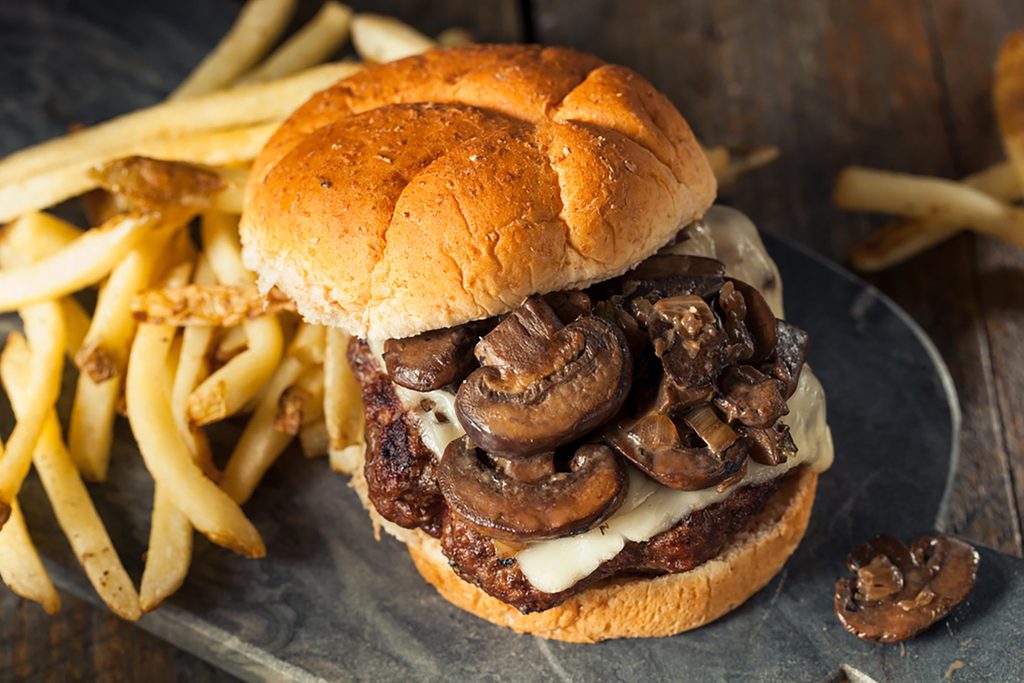
Healthy up your burgers
Start with ground beef that’s at least 90 percent lean. (Some people are under the illusion that flavor resides in fat, but it’s the lean part of the meat that is the most savory.) You can boost your burger by mixing in any of the following: sautéed onions or mushrooms, a little Worcestershire sauce, grated cheddar or another aged cheese, sun-dried tomatoes, spinach, feta, or olives. Add additional fiber by serving your burgers on a whole-grain or sprouted grain bun or English muffin. Also add these fun foods you never knew you could grill to the burner.
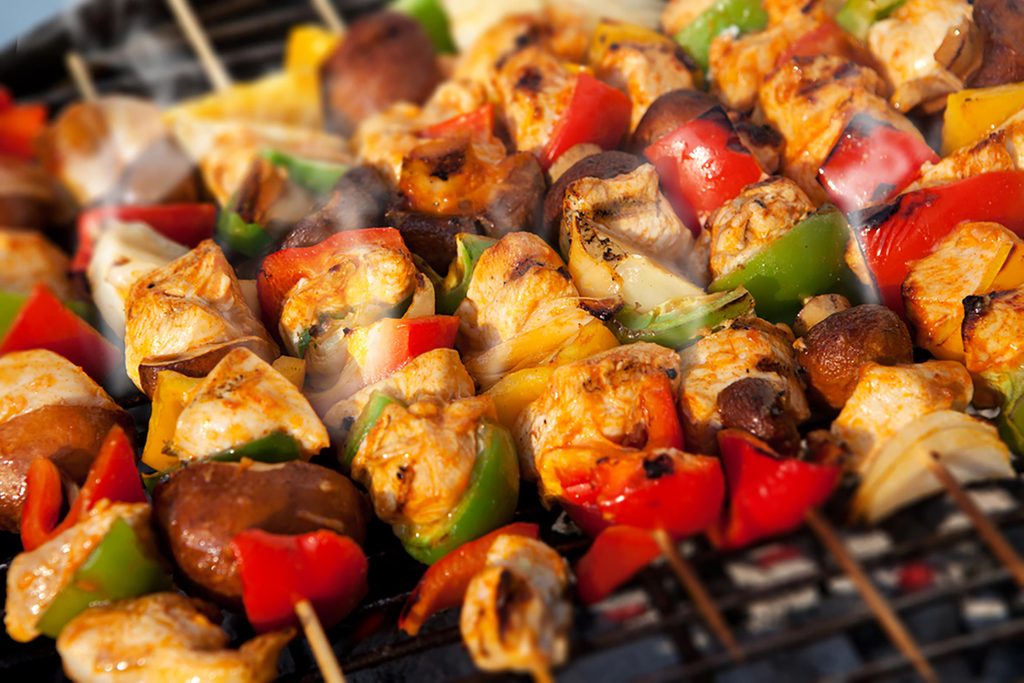
Get colorful with your kebabs
Research shows that many vitamins and minerals when eaten together provide maximum boost of nutrition, such as iron and vitamin C. So spear as many healthy veggies or fruits in between the meats: make your own combos of cubed chicken breast, monkfish, prawns or shrimp, salmon, lean beef, tofu, or tempeh and alternate with cherry tomatoes, onion, peppers, eggplant, pineapple chunks, broccoli, mushrooms, plums, peaches, or other stone fruit. Slide your selections onto skewers, brush with a little olive oil or a marinade, and grill over the BBQ until the meat is cooked and tender and the vegetables are roasted and charred around the edges. Caution: If using wooden skewers, pre-soak them for 30 minutes to avoid the burning the ends while cooking.
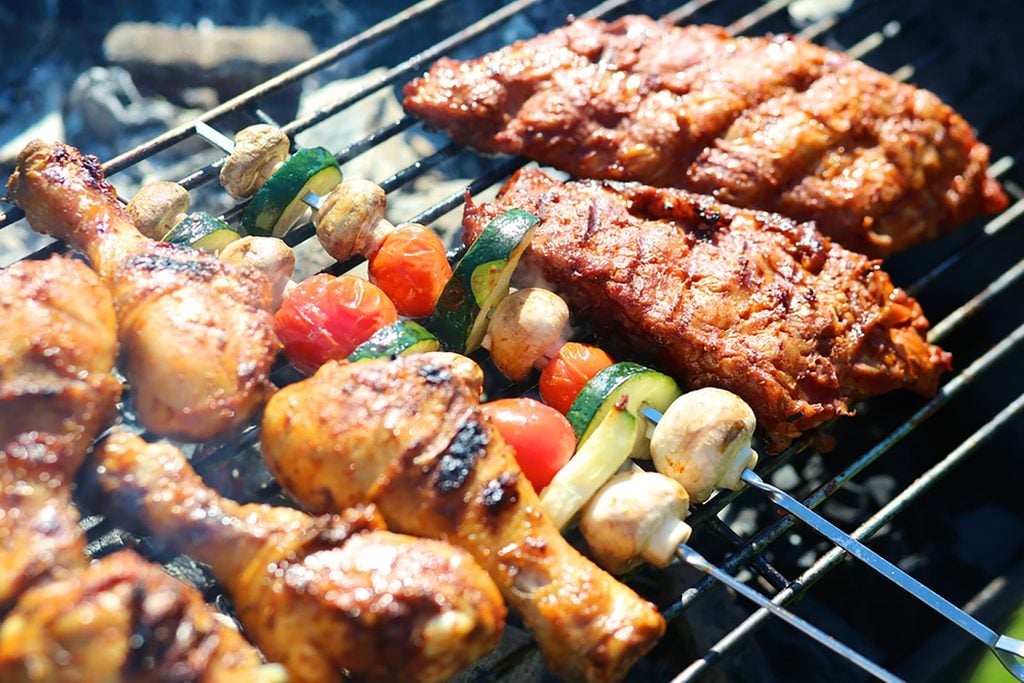
Pre-size your portions
Encourage guests to eat less meat by making smaller portions: try serving 1/4 pound burgers (made with extra-lean ground sirloin) instead of 1/3 or 1/2 pound patties; choose filet mignon-sized steaks instead of 16-ounce cuts; slice sausages in half lengthwise before grilling; make kebabs from smaller cubes of meat. Round out your meal with more fresh fruits and veggies like corn on the cob, leafy green salads, or berries in a bowl. Try these other tips for portion control.
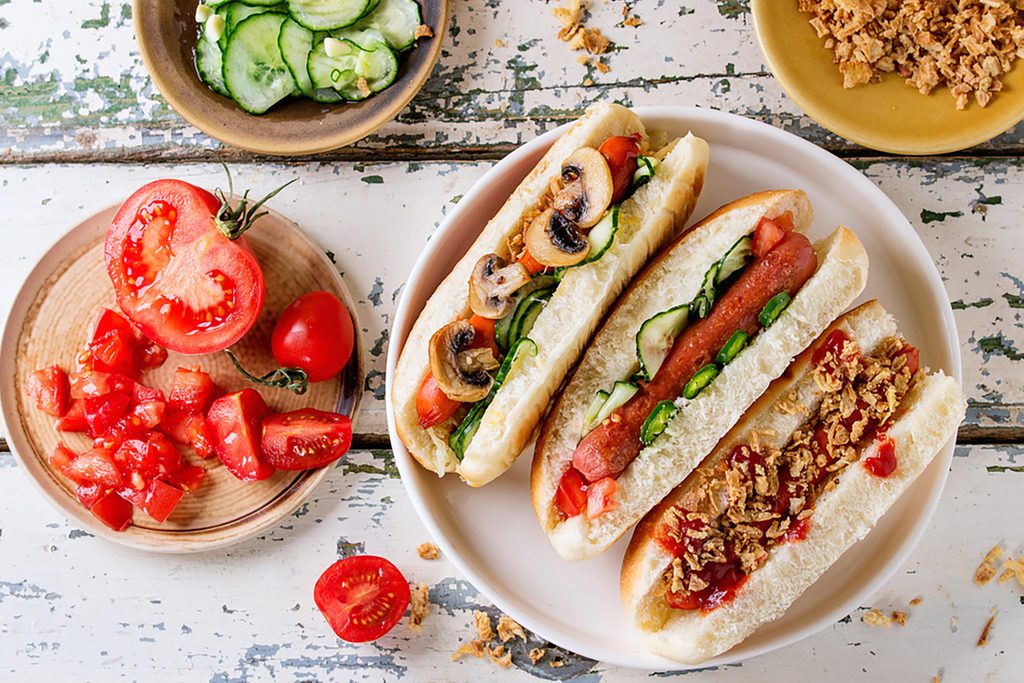
Take your hot dog through the garden
Avoid topping dogs with chili and cheese, which double the calories and saturated fat. Instead, try making something fresh and flavorful: a Vietnamese-inspired sauce of diced cucumber, shredded carrot, lime and chili-garlic sauce, for example. Or try sauerkraut or cabbage slaw. (Watch portions, because sauerkraut can be high in sodium.) Again, use whole-grain buns if you can find them.
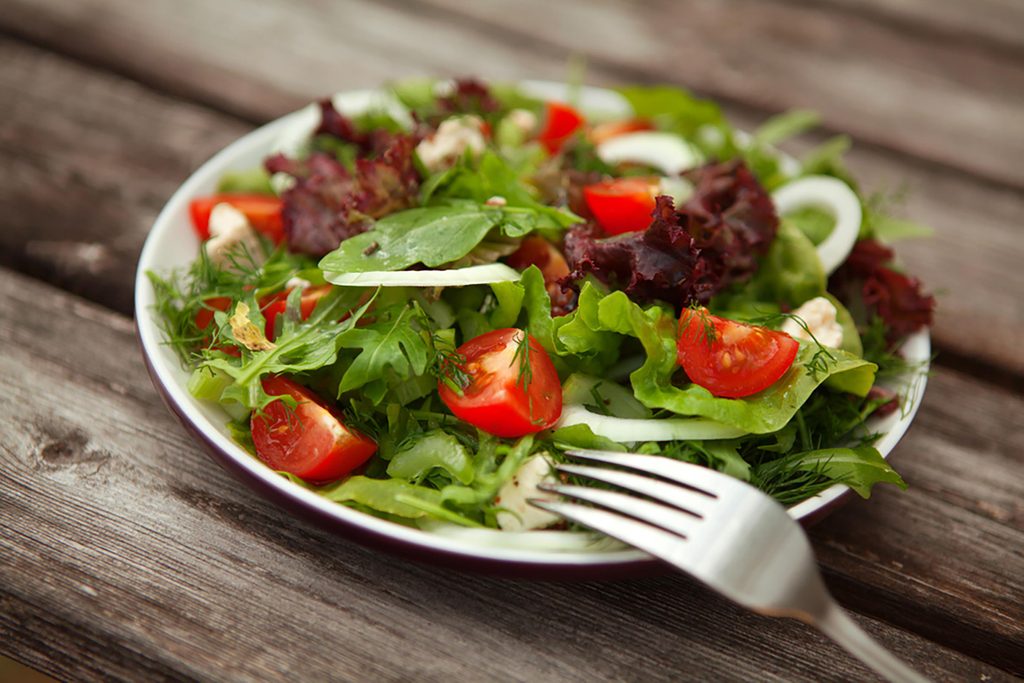
Keep the sides as naked as possible
When it comes to side dishes, go for the greens. Make salads from green leafy veggies like spinach, arugula, or watercress, and cook kale or spinach with garlic and serve hot. Also consider adding herbs, like basil or parsley, which contain disease-fighting antioxidants; in fact, all of these can counteract some of the harmful effects of the other foods at a barbecue.
Other tricks: When making dressing for coleslaw or potato salad (or another creamy side salad), replace part or all of the mayonnaise with nonfat plain yogurt. And grill your corn on the cob: Pre-boil it until just tender, to keep it juicy and speed up the cooking time. Then, place it directly on the grill and turn until charred on the outside. Other good options include eggplant, garlic mushrooms, asparagus, and potatoes.